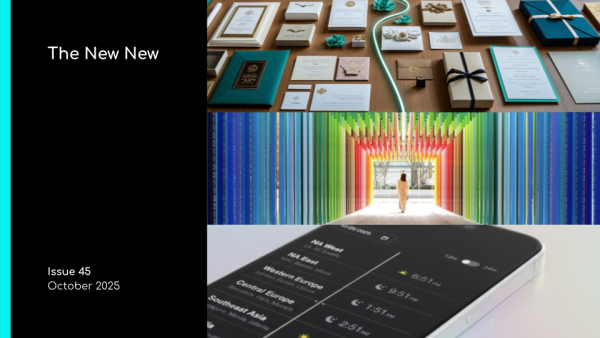Which 2012 Trend Will Continue Growing in 2013? Native Advertising.
For the media industry, 2012 was (yet another) year of impactful change. We saw Responsive Design become a common practice, big investments in mobile-first publishing, more agency leaders make the jump to media companies, and the official beginning of the hotly debated viewable ad and Do Not Track eras.
For the past few months, the hottest topic has been “native advertising.” In 2013, native advertising will continue as a hot trend.
What is Native Advertising?
Found on publishers’ websites, mobile sites, and apps, native advertising is content provided by the advertiser but has the look-and-feel of the publishers’ native content.
While the advertiser can provide a range of content types (e.g., news story, a blog post, photo galleries, infographics, videos), the content is normally unique/exclusive to an individual publisher’s properties.
The church and state lines are then removed: the advertisers content is placed in the same spaces traditionally reserved exclusively for publisher content (i.e., home page “latest stories” lists) and are distributed out in similar manners (e.g., newsletters, social media).

Example: A recent piece from UPS on forbes.com
Is Native Advertising just another name for Advertorials or Sponsored Content?
Depending on who you ask, the definition of native advertising does vary. For publishers, native advertising is an evolution of advertorials and sponsored content. Their church and state lines have been removed. For advertisers, this is Branded Content evolving into Brand Journalism.
Why is this trending? Why now?
The publishers are on board:
In Q4 alone, multiple high-profile launches occurred (see: Medium, Quartz, Mashable), including launches by local media companies (see: Boston.com Insights and MIT Technology Review’s Views from the Marketplace).
The success stories and case studies are coming in:
Fidelity’s native advertising campaign with The Atlantic, when compared to averages, saw 300–400% higher click-through rates and a 300–500% lift in engagement rates.

Example: Fidelity’s Thinking Big series on theatlantic.com
What to look for in 2013?
A study by Solve Media is showing that 1 in 2 media buyers would buy native advertising in 2013.
Even while publishers keep a close eye on the quality of content that advertisers can produce and advertisers grapple with native advertising’s limited scale, the growth of native advertising will continue to rapidly increase.
What to consider for your own marketing initiatives?
For marketers, native advertising solutions work best for brand and product/service-focused initiatives. Additionally, strong native advertising initiative will require support from a cross-functional team who can deliver paid, earned and owned strategies and tactics. A marketing team should be prepared to handle the blocking-and-tackling required to delivery any content marketing initiative (e.g., multiple executions, cross channel promotion, search optimization, measurement, CRM and marketing automation integrations).
If you are a marketer, as you approach your first native advertising initiative, do take caution when laying your strategies. Do not treat a native advertising initiative as Branded Content (typically, too promotional), Press Releases (too internal facing and corporate), Blogging (too informal), or Advertorial (too long-winded).
The best executions will be, at their core, Brand Journalism.
Your content will be in the editorial trenches of a publishers’ digital properties fighting for engagement and clicks in new ways.
What’s the bottom-line? Why does this matter?
Publishers are quickly launching their own native advertising solutions and marketers have embraced the trend. The case studies are only starting to come in now and the best practices will be created (and refined). In 2013, native advertising is projected to move from “new trend/buzzword” into mainstream marketing tactic.

Example of a recent Chevron piece running The Atlantic’s new business publication, Quartz.
———————————-

Example: CEB’s View from the Marketplace on MIT Technology Review.






